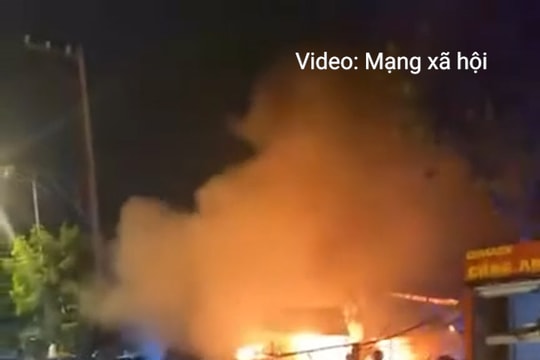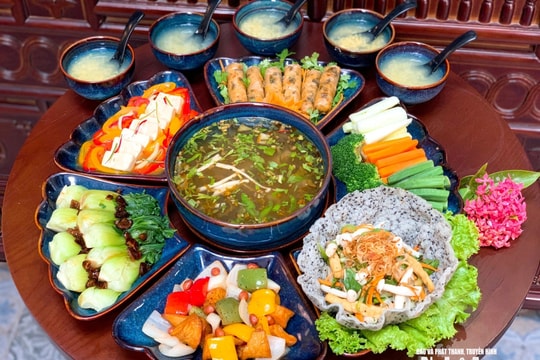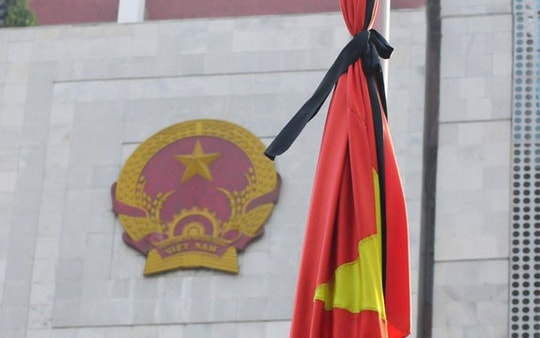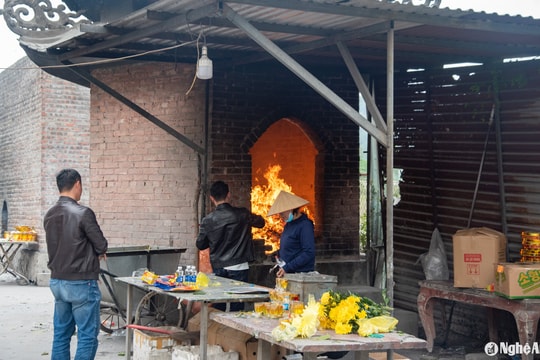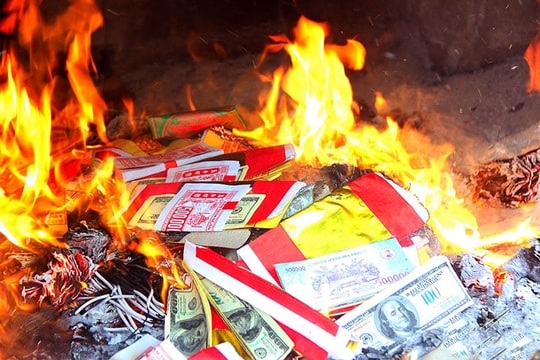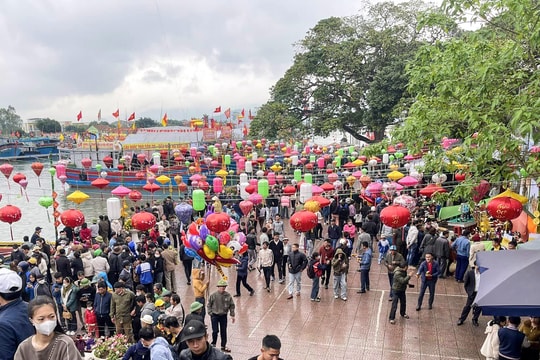Economic difficulties, many people still spend millions to burn votive paper
(Baonghean.vn) - Although the economy is facing a difficult situation due to the Covid-19 pandemic, many people who go to temples and pagodas on the occasion of the Full Moon Festival in January are still willing to spend millions of dong, even tens of millions of dong, burning votive paper, causing a lot of waste.
Temple of Ong Hoang Muoi(Hung Thinh, Hung Nguyen), is one of the places that attracts a lot of domestic and foreign tourists to pray for peace and good luck at the beginning of the new year.
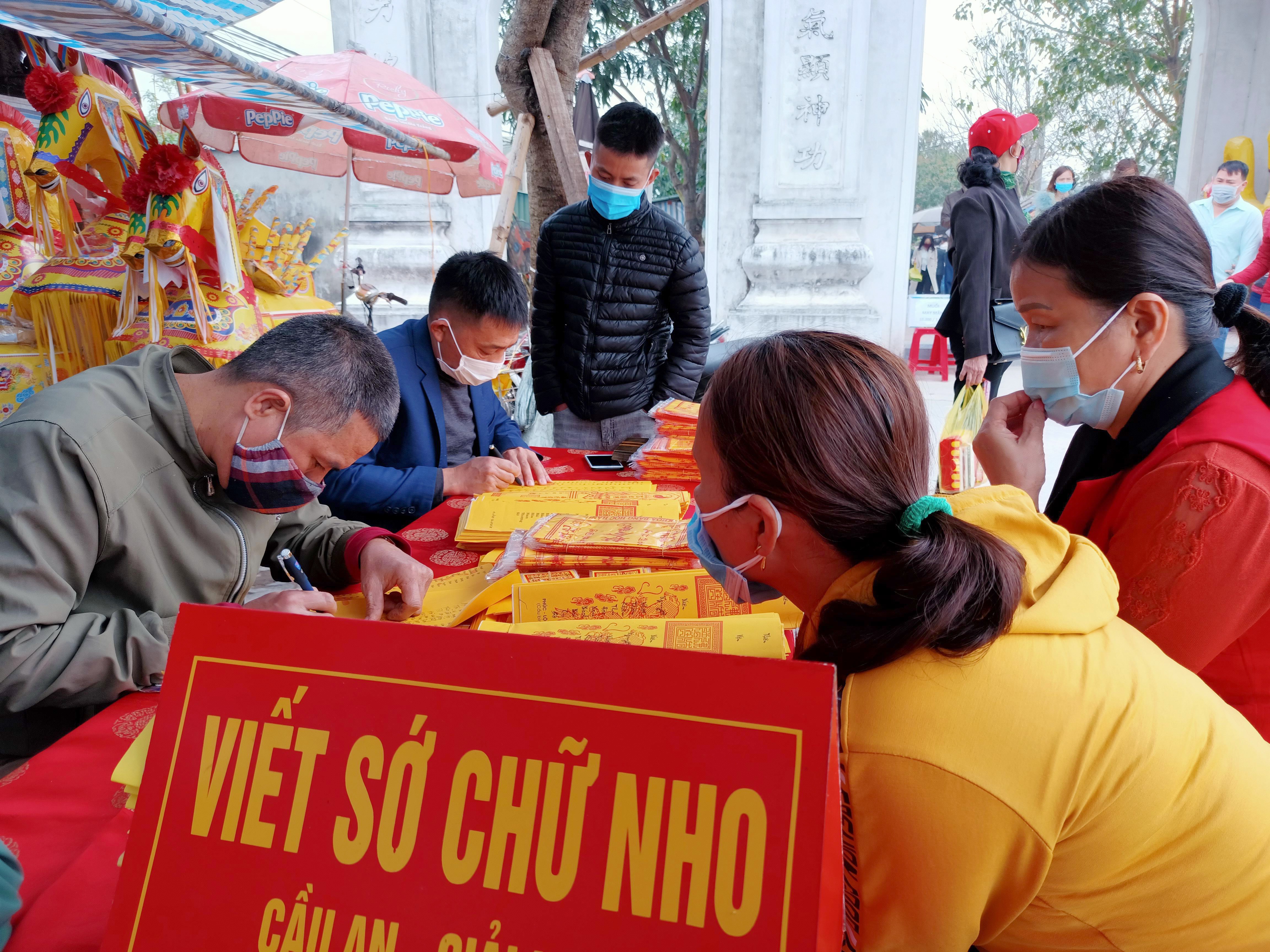 |
| According to traditional beliefs, at the beginning of the year, people often go to temples and pagodas to pray for peace and to ward off bad luck, so the services offered at these sites have also flourished, including the service of writing petitions. Each petition does not include the cost of offerings and costs 10,000 VND. Photo: TL |
Not counting the days before and after the Lunar New Year, on the 15th day of the first lunar month this year, despite the recommendation to limit travel and large gatherings, the number of visitors to Ong Hoang Muoi Temple is still very large. In addition to writing petitions to pray for peace, fortune, and luck for family and relatives, along with a small amount of money,votive paperMany families also buy stacks of paper offerings and "horses" to burn.
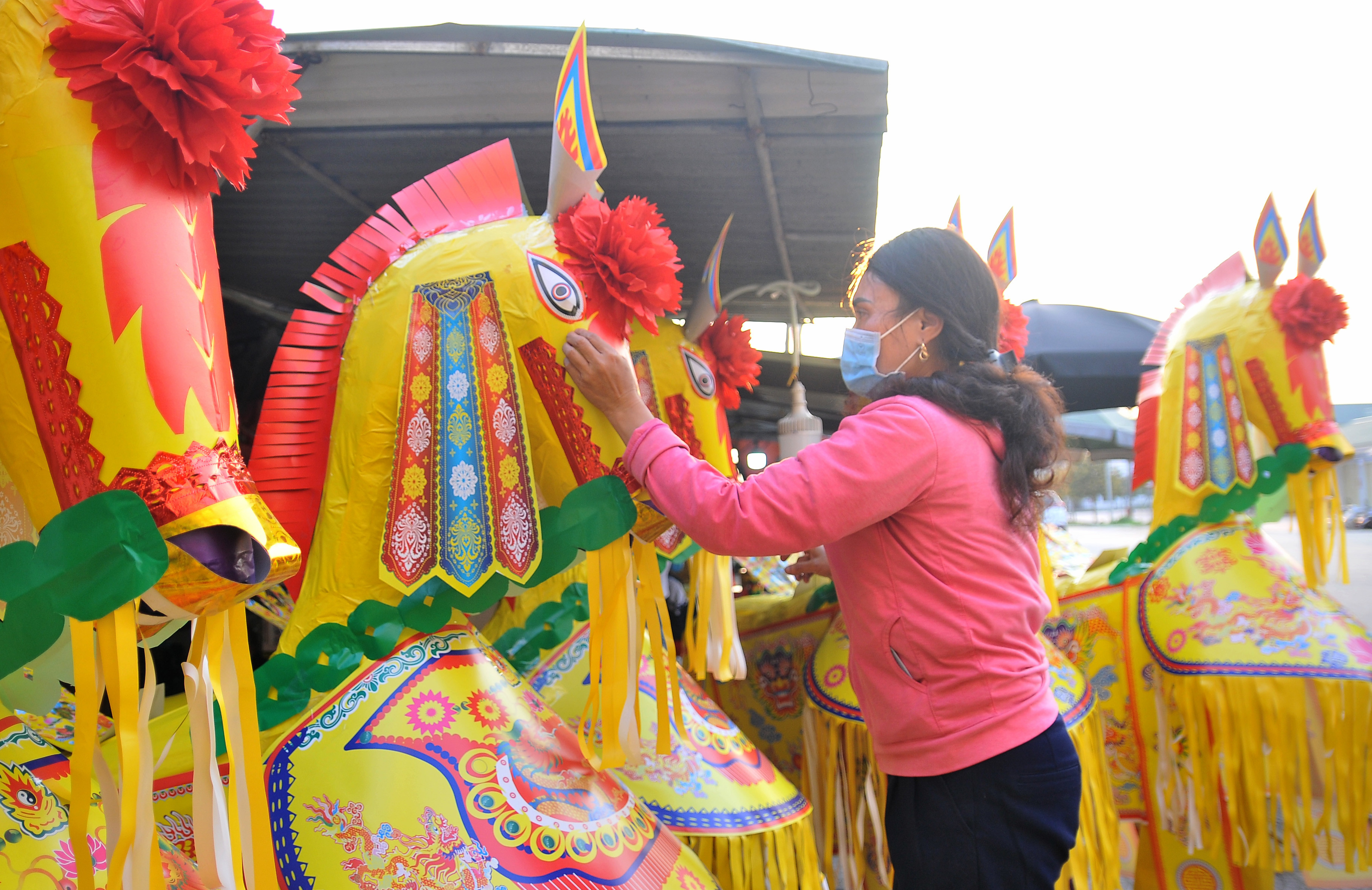 |
| Businesses right in front of the Ong Hoang Muoi Temple gate are redecorating the "horse" to serve tourists. Photo: TL |
To meet the needs of customers, right in front of the gate of Ong Hoang Muoi Temple, the shops also provide services of displaying offerings and praying and worshiping.
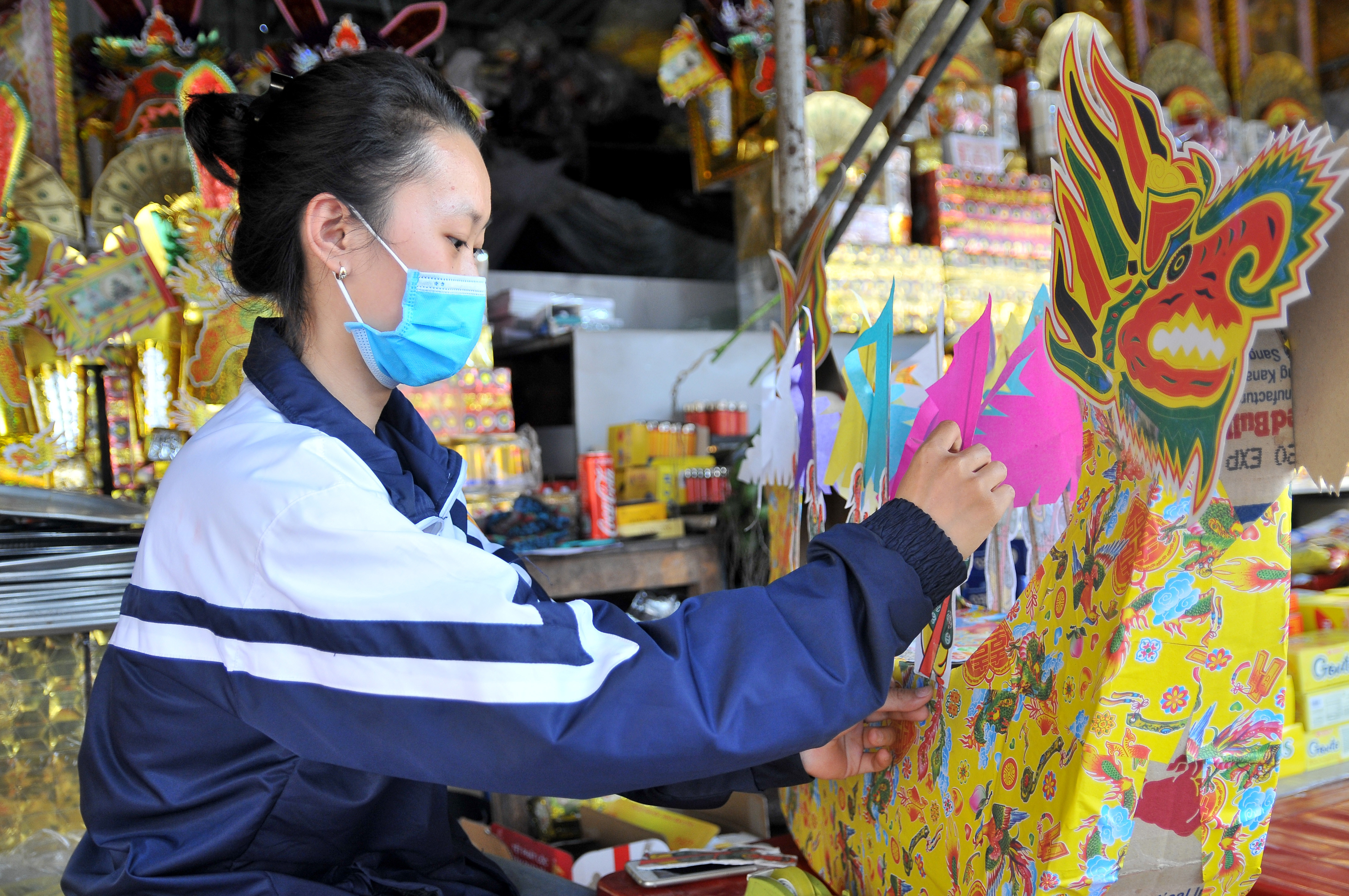 |
| In addition to selling incense and flowers, businesses also provide offerings for tourists in need. Photo: TL |
Each set of offerings, depending on the customer's needs, costs from 300,000 VND to millions of VND. Including the cost of writing the petition and having a "shaman" accompany it, each family spends nearly 1 million VND for a small set of offerings. If a family buys a "horse", "elephant", paper boat, mannequin... the cost is even higher. Each "horse", woven from bamboo and decorated with gold paper, is sold for 400,000 - 500,000 VND. Usually, families who burn a "horse" must also burn official uniforms, tents, parasols... so the cost will be higher.
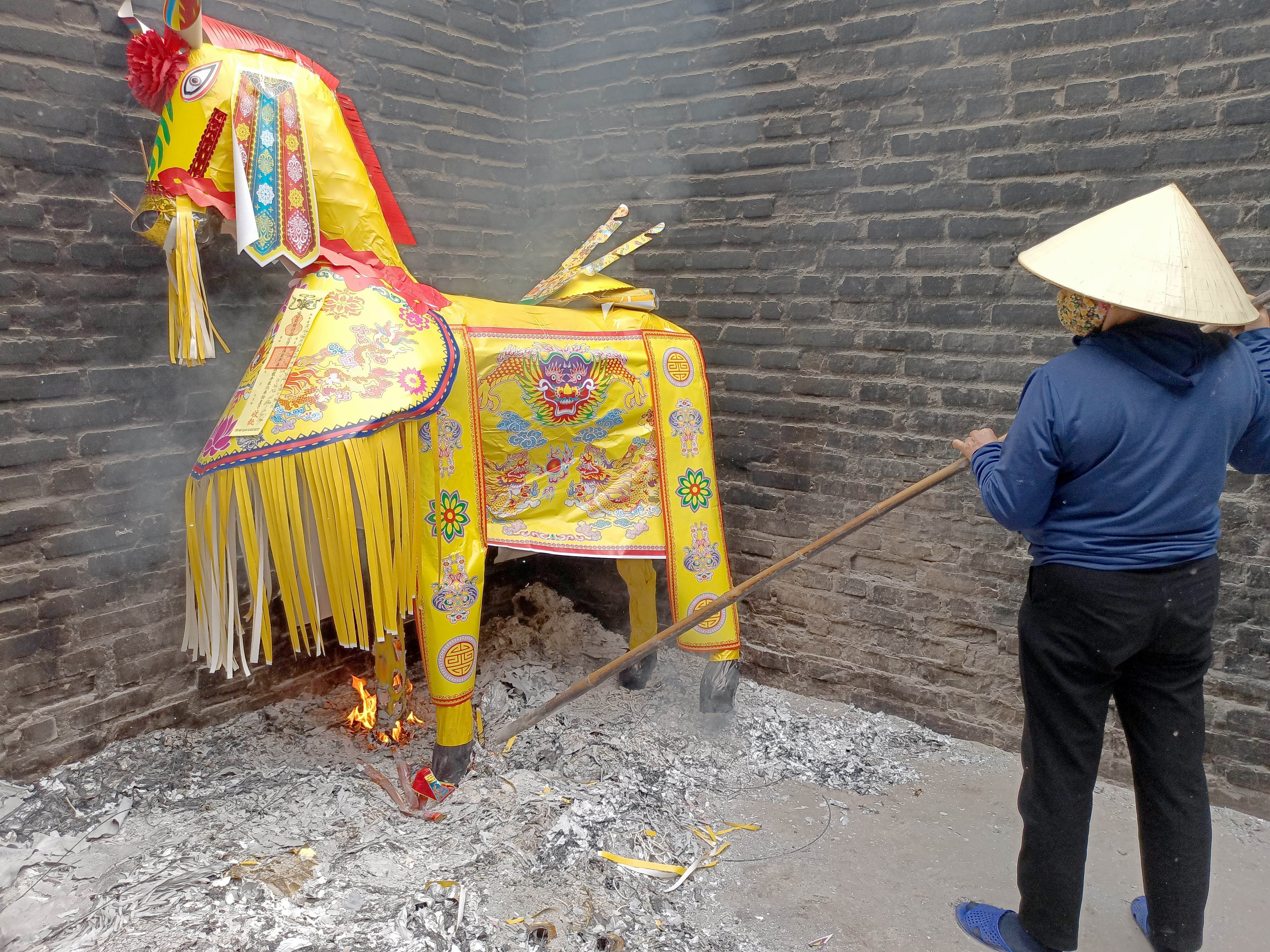 |
| After the ceremony, the "horse" was brought to the area where the votive papers were burned. Photo: TL |
Ms. Trang, from Da Nang, said that almost every year, on the occasion of returning to her hometown to pay respect to her ancestors, her family goes to the Ong Hoang Muoi Temple, hoping to pray for a new year of peace, happiness and good luck. And the act of buying offerings and burning the "horse" also comes from traditional beliefs. Seeing many people doing it, she also did it.
According to a person on duty at Ong Hoang Muoi Temple, about 50 "horses" are burned here every day. At times when there are many groups coming to worship, especially groups from the Northern provinces, the number of "horses" burned is even larger, up to hundreds.
Although cultural units have actively promoted the restriction of burning votive papers, in order to ensure environmental hygiene, prevent fires and explosions at relic sites, and ensure healthy and economical cultural and spiritual activities. However, in reality, relic sites cannot prohibit or restrict people from buying votive papers, even buying sets of votive papers worth tens of millions of dong to burn. This is causing a huge waste./.

